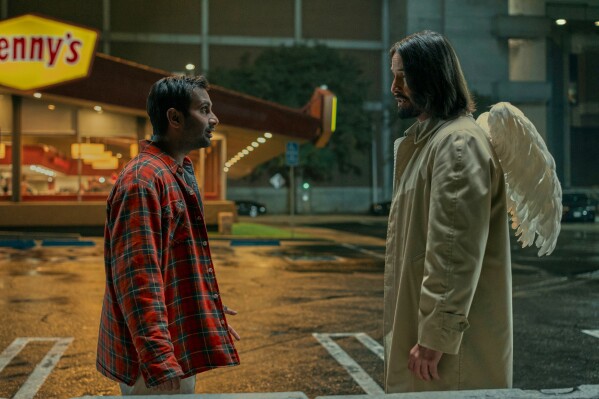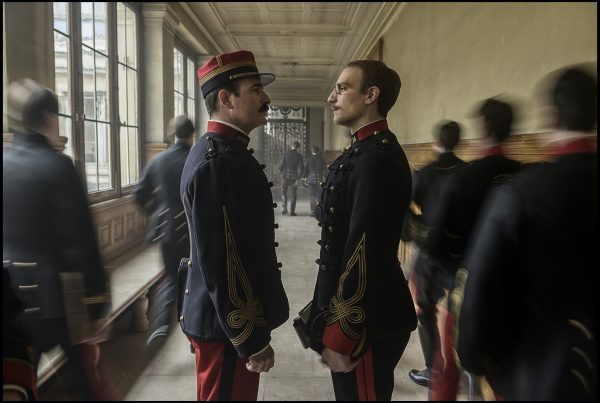
“The Great Gatsby” has been a thorn in the craw of filmmakers dating back to the silent era. It has been filmed four times prior to this new version, and none of them have been considered the definitive adaptation of F. Scott Fitzgerald’s Great American Novel. Even Francis Ford Coppola, who wrote the 1974 version with Robert Redford, couldn’t make it work.
Rather than accept the fact that the lyrical beauty of Fitzgerald’s prose just doesn’t lend itself to cinematic interpretation, Baz Luhrmann has given us his own “Gatsby,” an absurdly expensive $127 million 3D blockbuster opening today that, if my prediction is true, will go down as one of the most extravagant bombs in movie history.
As a framing device, co-screenwriters Luhrmann and Craig Pearce selected the silly conceit of Nick Carraway (Tobey Maguire) penning his Gatsby narrative from the confines of a sanitarium. Though, as the book’s most levelheaded character, the film never implies that he would grow disturbed enough to belong in one. The story then plays out roughly like Fitzgerald’s, only on steroids and with lots of CGI manipulation: Nick meets Gatsby (Leonardo DiCaprio) at one of the man’s lavish soirees, discovers Gatsby’s intentions to court Daisy Buchanan (Carey Mulligan), an ex-flame now married to the philandering brute Tom (Joel Edgerton), and helps the great man achieve his goal. Things get messy, lives change, idealism shatters, people die.
Luhrmann, who directed such abrasive ADD spectacles as “Moulin Rouge” and “Australia,” has filmed a “Gatsby” fit for his shallow vision, turning Fitzgerald’s masterwork into a bombastic soap opera: a talky, glittery trinket lacquered in both chic nostalgia and shrill modernism.
He floods the soundtrack with modern hip-hop and indie music blasting incongruently from the Jazz Age parties’ sound systems, and turns Fitzgerald’s New York into a gleaming graphic-novel megalopolis, with characters who themselves quickly begin to resemble animated cartoons. Alongside such anachronisms, the writer-director painstakingly selected costumes that scream “Twenties!” or, moreover, our idea of what high society types looked like in the ‘20s, and he lifts voice-over narration directly from the source material, whose eloquence chafes against the garish imagery. Torn between homage and reinvention, the film isn’t even as ballsy as Luhrmann’s own “Romeo and Juliet,” which at least had enough consistency of vision to plant the story in a definitive postmodern light.
The usage of 3D is never more than superficial, but superficiality seems to be the be-all and end-all of Luhrmann’s dubious talents. This “Gatsby” doesn’t view vulgar excesses of wealth askance but celebrates them – nay, glorifies them, as gleaming totems to the almighty dollar. Chief characters are introduced by their sparkling rings, well before we get a glimpse of their faces. On-screen deaths are not brutal and shocking; they are exorbitant pieces of crass performance art. There is no soul in the movie, no discernable humanity, and no reason to care about these people: There is only money, privilege and the surfaces of things. This is a movie for the Donald Trumps and Mitt Romneys of the world, the cinematic equivalent of a dressage pony. It’s tonally ugly and tone-deaf, and it couldn’t be less amenable to the times most of us are living in.
********

Watching Francois Ozon’s new film “In the House,” I thought of an old lyric from the Scottish band Belle & Sebastian: “I could kill you, sure, but I could only make you cry with these words.” Contrary to the old saying – “sticks and stones,” and all that – words can definitely hurt people. “In the House” is about Claude (Ernst Umhauer), a precocious high-school sophomore from a broken home who ingratiates himself into the middle-class residence of a vulnerable classmate, simply because it’ll give him fodder to write about for his literature class. He visits the friend under the guise of math tutelage, and he returns to class with acrid, brutal but arguably accurate prose about the boy and his parents, provincial folk struggling with money problems with middle-class malaise.
His teacher, Germain (Fabrice Luchini), sees unusual promise in the boy and helps to foster his talent – staying after class to critique his stories, offering him books from his private library – even as Claude’s narratives grow increasingly uncomfortable. Germain becomes something of an addict for Claude’s words; at one point, he even risks his job, to say nothing of his moral code, to keep the story going.
For Claude, it grows increasingly unclear if the stories we see playing out in front us in his friend’s house – aided by his ever-present voice-over narration – are the truth or his fiction, and that’s part of what makes “In the House” such a keen, cerebral thriller. But more than that, it’s a film about the slippery ethical border between observation and voyeurism – between verite and exploitation. Resembling a younger Michael Cera, Umhauer brilliantly plays a character that is, like Baz Luhrmann’s filmography, seemingly without a soul. There is no empathy in his eyes, only pure calculation. It’s unnerving to watch him prowl the hallways of a family of veritable strangers like a ghost, judging their every move.
At the same time, I couldn’t help relating to Luchini’s teacher, whose life becomes untethered the more he morphs from Claude’s mentor to a sucker in one of his stories. In Germain’s position, we like to think we’d stop the boy when his words become genuinely damaging, or when it puts our own comfort and career in peril. But anyone who’s become hooked on a story knows that sometimes you just want another line, no matter what it takes.
“In the House” opens today at Living Room Theaters at FAU, Regal Shadowood 16, Regal Delray Beach 18, Movies of Lake Worth, Lake Worth Playhouse, The Classic Gateway Theatre in Fort Lauderdale, and the Coral Gables Art Cinema.







